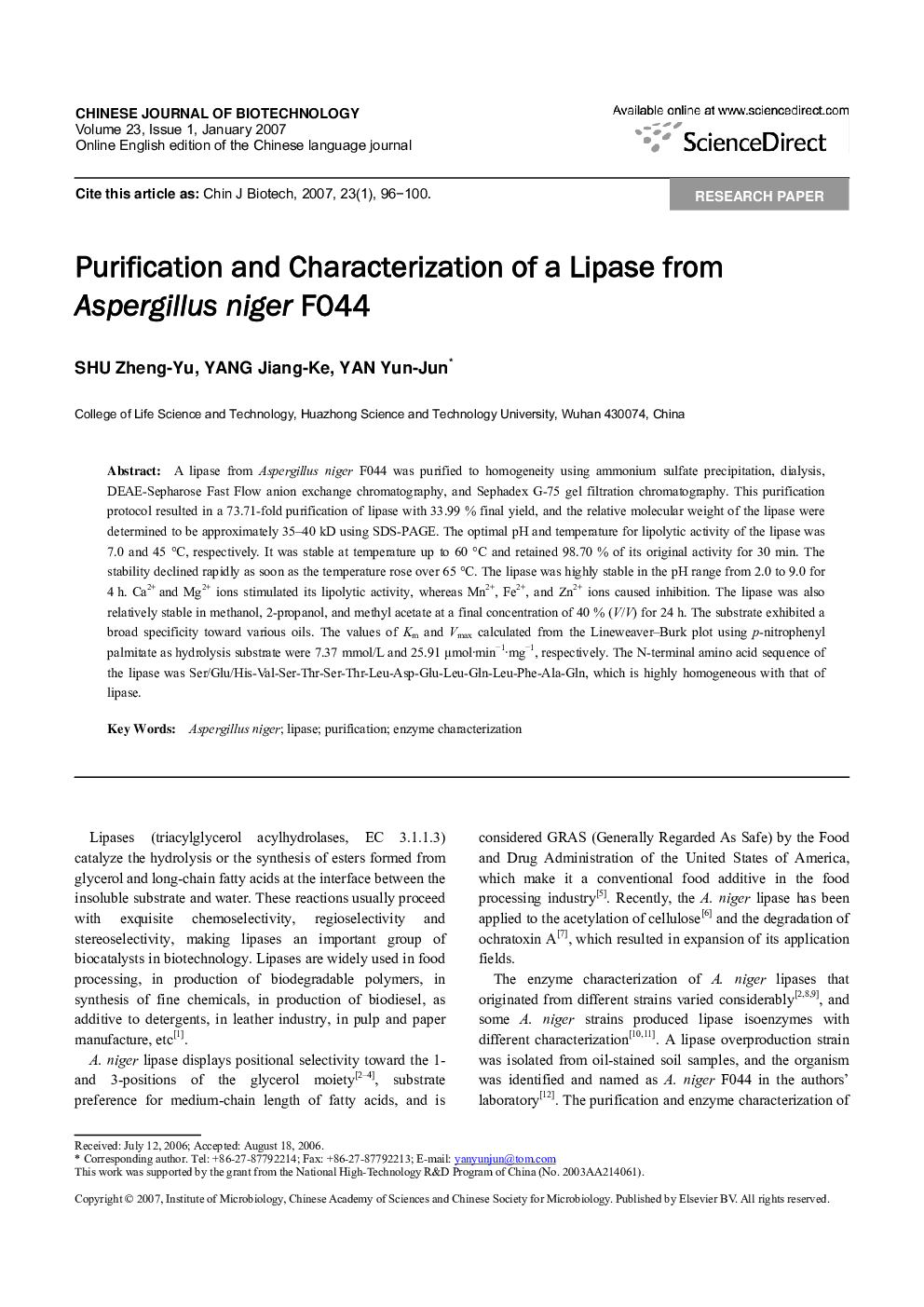| Article ID | Journal | Published Year | Pages | File Type |
|---|---|---|---|---|
| 2078926 | Chinese Journal of Biotechnology | 2007 | 6 Pages |
Abstract
A lipase from Aspergillus niger F044 was purified to homogeneity using ammonium sulfate precipitation, dialysis, DEAE-Sepharose Fast Flow anion exchange chromatography, and Sephadex G-75 gel filtration chromatography. This purification protocol resulted in a 73.71-fold purification of lipase with 33.99 % final yield, and the relative molecular weight of the lipase were determined to be approximately 35-40 kD using SDS-PAGE. The optimal pH and temperature for lipolytic activity of the lipase was 7.0 and 45 °C, respectively. It was stable at temperature up to 60 °C and retained 98.70 % of its original activity for 30 min. The stability declined rapidly as soon as the temperature rose over 65 °C. The lipase was highly stable in the pH range from 2.0 to 9.0 for 4h. Ca2+ and Mg2+ ions stimulated its lipolytic activity, whereas Mn2+, Fe2+, and Zn2+ ions caused inhibition. The lipase was also relatively stable in methanol, 2-propanol, and methyl acetate at a final concentration of 40 % (V/V) for 24 h. The substrate exhibited a broad specificity toward various oils. The values of Km and Vmax calculated from the Lineweaver-Burk plot using Ï-nitrophenyl palmitate as hydrolysis substrate were 7.37 mmol/L and 25.91 μmol·min1·mg1, respectively. The N-terminal amino acid sequence of the lipase was Ser/Glu/His-Val-Ser-Thr-Ser-Thr-Leu-Asp-Glu-Leu-Gln-Leu-Phe-Ala-Gln, which is highly homogeneous with that of lipase.
Related Topics
Life Sciences
Biochemistry, Genetics and Molecular Biology
Biotechnology
Authors
SHU Zheng-Yu, YANG Jiang-Ke, YAN Yun-Jun,
